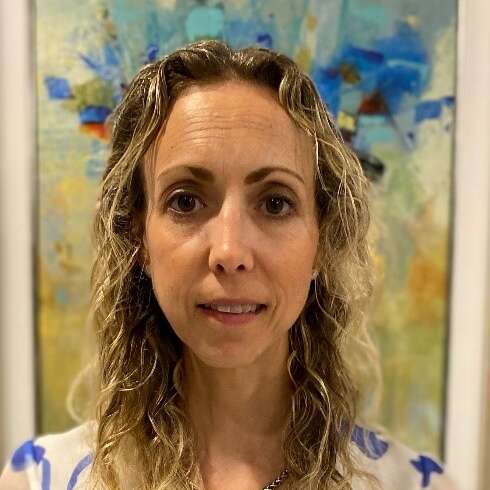Hubbard Radio Washington DC, LLC. All rights reserved. This website is not intended for users located within the European Economic Area.
On Air: Federal News Network

Navigating today’s supply chain challenges: Strategies for success
On Demand
How can you ensure resilient supply chains to navigate tomorrow's challenges?
No agency can live without its supply chain. Yet for a variety of reasons, supply chains have become difficult to live with. Lingering pandemic effects include shortages and uncertain delivery times. Plus, agencies must ensure what they buy doesn’t include materials or components from prohibited sources.
Supply chain management has become a priority for all organizations, including federal agencies. Because supply chain management concerns affect the whole economy, in late 2023 the Biden administration even convened a White House Council on Supply Chain Resilience.
For agencies, the goal of supply chain management is assurance of needed goods and services consistent with good procurement practices and security for the government and its data.
To get a sense of how agencies approach supply chain management in the age of uncertainty, Federal News Network asked a panel of government and industry practitioners for their best practices. We wanted to know their top challenges; lessons learned during the pandemic; and how data and visibility help with planning and resilience.
They described the need for visibility into supply chains beyond second and third tier suppliers, and the need for a data-based approach.
Strategic sourcing
Military supply chain issues garner a lot of the headlines, but civilian agencies don’t have it easy.
“In the last couple of years, the biggest thing is availability,” said Jimmy Fleming-Scott, the senior procurement executive and chief procurement officer at Housing and Urban Development. HUD oversees procurement its housing partners conduct for themselves, to ensure they follow regulations. For the department itself, Fleming-Scott said, HUD has a $10 billion portfolio covering everything from services needed to maintain its facilities to information technology and consulting services.
“We use a lot of construction engineers and services like that,” he said. “And they are getting more and more scarce every day.”
At the far-flung National Institutes of Health, the large umbrella of compliance activities includes supply chain risk management.
Meredith Stein, the director of Risk Management and Audit Liaison, said the Bethesda, Maryland hospital complex alone requires $42 million in annual supplies. She said federated groups of agencies, like the NIH individual institutes, reduce risk by pooling their procurements in the strategic sourcing model, rather than compete with one another.
“It’s a way to help reduce cost and reduce redundancy and waste,” Stein said. She advised “analyzing a download of your agency’s procurement data for the last fiscal year, then filter for a specific vendor.
“See how many offices have bought separately,” Stein said. She said lots of governmentwide guidance on strategic sourcing is available from places such as the Government Accountability Office. NIH has brought the Center for Disease Control and Prevention and the FDA in on some strategic sourcing initiatives.
NIH, located mostly on a 310-acre complex with scores of buildings, operates almost as a small city, said Elizabeth Van Absher, the director of the Division of Logistics Services. Its supply chain includes both medical and research supplies (including animals and related supplies) and capital equipment for its fleet and on-campus emergency services. NIH also maintains an extensive warehousing operation to store and distribute materials.
Van Absher noted the supply risk of components or sub-materials originating in places prohibited on humanitarian or national security grounds.
“We have to think about not just those raw shortages of materials,” Van Absher said, “but also think about how they’re extracted [with possible] problematic labor practices that are far offshore. We have to rely on our manufacturers for being responsible and sharing information back with us on who they do business with.”
The government’s mandates can complicate its own supply chain management, Van Absher said. For example, certain classes of personal protection equipment must contain 100% domestically sourced materials. An electric fleet mandate and certain lab requirements bring up the issue of cobalt, most of which comes from the problematic Congo-Kinshasa.
Operating worldwide
The Navy exemplifies supply chain challenges and breadth of requirements. Panelist Kurt Wendelken is vice commander and executive director of the Naval Supply Systems Command. It acquires parts and materiel for the Navy, and it operates both the Navy Exchange retail chain and a lodging chain around the world to support Navy operations.
Wendelken pointed out that the Navy, at the moment, is engaged in kinetic operations in the Middle East.
“That adds complexity to the normally complex work we do,” he said. “We also are experiencing disruptions because we move material around the world and worldwide shipping is also impacted by world events.”
The government can’t go it alone in managing supply chains, Wendelken said.
“We really are concerned and working with industry to make sure that they’re able to respond to the demand signal that we provide,” he said.
Wendelken added that no single strategy for supply chain management applies when agencies like the Department of the Navy operate, in effect, several supply chains, each supporting a specific mission. Maximum efficiency in the lean, JIT model might work where out-of-stock situations or delays are tolerable. Critical missions may require more resiliency, he said.
The post-pandemic period with its ongoing disruptions “is really requiring everyone to rethink how to do their supply chains, and which supply chains are suited for maximum efficiency and which are suited for more resilient planning,” Wendelken said. He added that the Navy is about four years into a supply chain transformation, a process that includes benchmarking Naval practices against the best in industry.
Joe Damour, the director of federal advisory at KPMG, said that for both federal and commercial organizations, managing supply chains and their risk requires visibility back to the raw materials, several tiers below their prime contractors. That in turn requires a data-based approach and the need for data and systems interoperability.
“Getting that single pane of glass view across operations is key to minimizing the disruptions to mission critical operations,” Damour said.
The data challenge, Damour said, occurs on both the buyer and seller side.
“There’s so many permutations and combinations of data among the various vendors out there, the enterprise resource planning systems out there, and there not being any common language among those systems,” Damour said. The government also has numerous legacy systems, each in a silo, that work against visibility and transferability of information, he said.
“It’s hard to get to a real time view of the operation in a timely way,” Damour said. “Then you can’t really make well informed decisions.”
Knitting data threads
Emerging integration tools promise to let buying organizations tie together procurement and supplier information from disparate systems.
“We are using a commercially available tool to collect and correlate data from various sources,” HUD’s Fleming-Scott said, “and then we look to identify risk within our supply chain, both from those that we’re directly buying from and through information provided by their supply chains as well.” He said the tool gives HUD early warnings of potential disruptions “from a particular supplier who may be having challenges either upstream or downstream in [its own] supply chain.”
HUD also uses the tool to obtain supply chain insight for various product categories, Fleming-Scott added.
The Navy has started dealing with its suppliers in two new ways, Wendelken said. One is simply having better and more continuous discussions with the most critical companies.
“We’ve assigned a major leader to engage directly with the C-suite at our major suppliers,” he said. “And it’s a real two-way street. We’re open to having them tell us how we could be better customers.”
Beyond better communication, he said, the command has developed what he called a number of minimum viable products, “tools to quickly aggregate data for specific tasks where we had some challenges.” In one instance, the command had problems obtaining certain food items during the pandemic.
“We had to work really, really hard to get after that,” Wendelken said. “It was stocks of food or raw materials; it was truck drivers; it was a variety of different things.”
Now the Navy is looking for ways to aggregate multiple data sources in data lakes, pursuant to getting visibility to the “nth level” of the supply chains.
Damour said that while aggregating big data from multiple sources can “inject some noise into the process,” having the data pool from which to draw insights will ultimately improve supply chain risk management. He said that KPMG’s Smart Solutions product gathers in data, filters out noise, and uses digital twinning, or electronic models of a client’s supply chain against which to run what-if exercises. Now, he added, artificial intelligence has “open the floodgates” to insights leading to better organizational decisions, when trained with the right client data.
He advised creating cross-functional teams to ensure not just supplies but also compliance in avoiding prohibited sources or areas of conflict.
“There’s a change management component; there’s a compliance component” to supply chain risk management, Damour said. “The office of general counsel is usually involved when we start talking about legal and trade requirements.”
The NIH’s Van Absher emphasized the value of streamlining the agency’s own processes as a starting point of modernizing systems to support supply chain risk management.
She said she did “undercover boss as a customer in my own space,” asking staff to map out the order-placement process.
“It took 32 steps to place an order when I first got there. We’re now down to eight steps.” But the simplification process continues. Van Absher said her group is also trying to streamline object class codes in order to ultimately have a clearer picture of what NIH buys in totality. That question came up as the result of a shortage of laboratory glassware – beakers and flasks – during the pandemic.
“What are we really buying as an agency or across the federal government?” Van Absher said. “We honestly don’t fully understand that, even though we have spend-under-management as a guiding principle.”
The NIH’s Stein added that data is the foundation to building supply chain resiliency. She said NIH’s “roadmap to a more mature and resilient supply chain” includes “how crucial the data is for the agency to manage forecast planning. And with the best strategic vision to modernize the technology and streamline business processes.”
Learning objectives:
- Today’s supply chain challenges
- Data strategies to unlock new opportunities
- Building resilient supply chains for the future
By providing your contact information to us, you agree: (i) to receive promotional and/or news alerts via email from Federal News Network and our third party partners, (ii) that we may share your information with our third party partners who provide products and services that may be of interest to you and (iii) that you are not located within the European Economic Area.
Please register using the form on this page.
Have questions or need help? Visit our Q&A page for answers to common questions or to reach a member of our team.
Speakers



Tom Temin
Host, Federal Drive
Federal News Network
By providing your contact information to us, you agree: (i) to receive promotional and/or news alerts via email from Federal News Network and our third party partners, (ii) that we may share your information with our third party partners who provide products and services that may be of interest to you and (iii) that you are not located within the European Economic Area.




